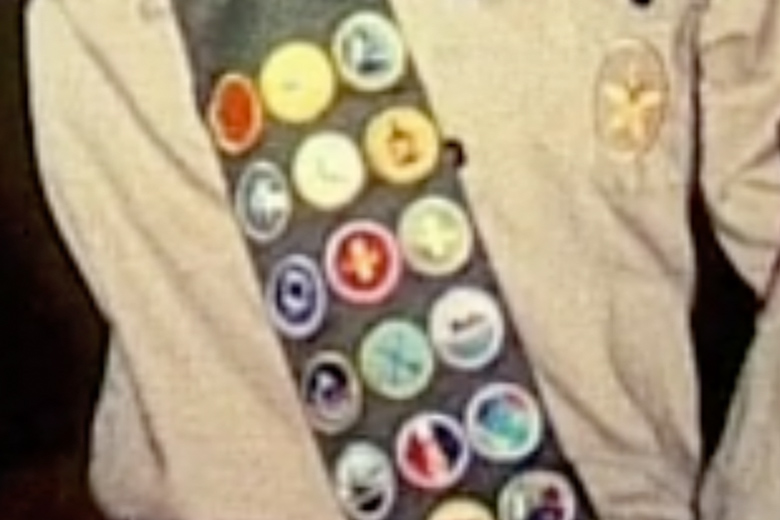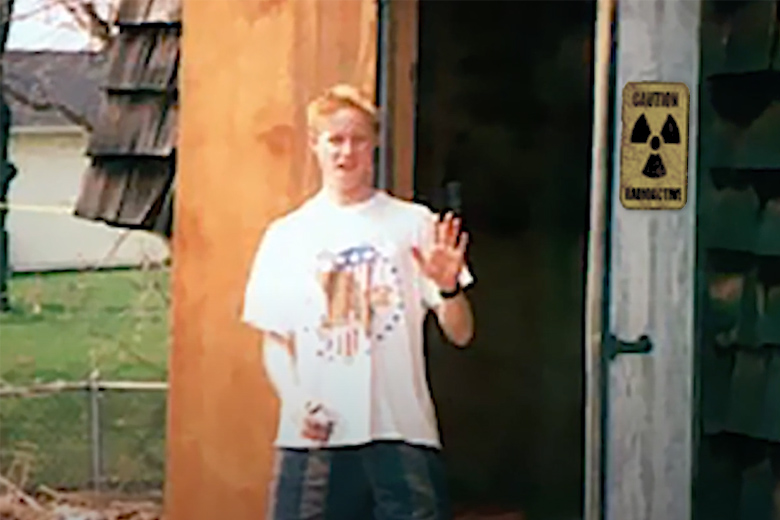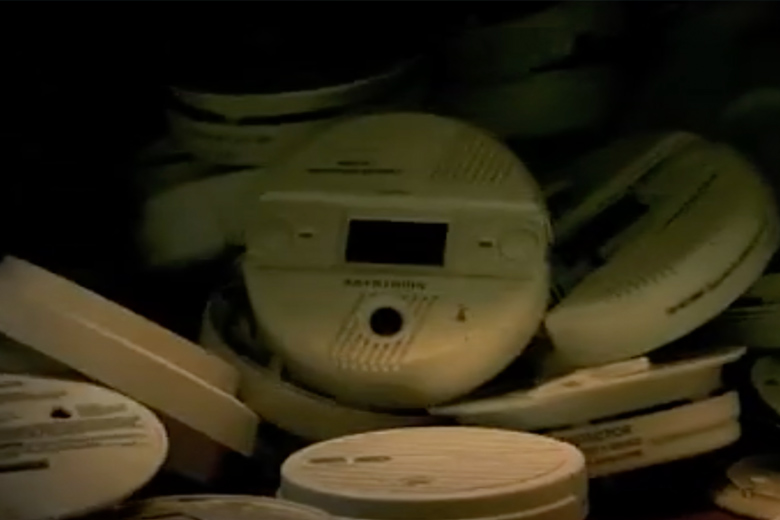When you think of a nuclear reactor, you probably think of a gigantic power station, somewhere on a remote piece of land far from civilization. This story teaches us that things don’t always have to be that way. This Boy Scout decided to build a nuclear reactor in his mother’s backyard…
Read on for this insane, but true story.

David Hahn
The protagonist of this story, David Hahn, was an ordinary young man from Michigan in the United States. He lived with his mother in Detroit. From an early age, David had been obsessed with chemistry. Where other children express this interest by mixing different shampoos so that they can feel like a scientist, David took a different approach.
At the age of fourteen David already managed to manufacture nitroglycerin. Nitro-what? Nitroglycerin. The main component of dynamite, a very powerful explosive. Not exactly what comes to mind when you think of introducing your child to the wonders of chemistry.
His environment soon noticed that David was engaged in special experiments…

Scouts
David was an enthusiastic member of the Boy Scouts, the American scouting organization. Within the Boy Scouts a child can achieve personal development in all kinds of different areas. While some Boy Scouts specialize in tying knots, building huts or navigating without a compass, David was mainly interested in other things.
What did his mother think about this?

Laboratory
David’s mother had a beautiful backyard behind her house, with a garden shed at the end. She didn’t use this garden shed much, because she mainly chose plants that required little maintenance. David’s antics gave her an idea. She didn’t know at the time whether this would turn out to be a good or a bad idea.
David was allowed to turn the shed into a laboratory. One advantage: if he were to work with explosive materials again, she wouldn’t be at risk. What she didn’t know was that from this shed, David would be risking the lives of tens of thousands of local residents. And all in the name of science…
David’s experiments got completely out of hand.

Badge
From this laboratory shed, David conducted several life-threatening chemical experiments. Where most scientists have a strict security protocol, David was just messing around. American Boy Scouts earn badges immersing themselves in various topics. From this shed, David would do anything to have a chance at a very special Boy Scout badge.
He was determined to become the first Boy Scout to pin this badge to his chest. There was just one obvious reason that no one had yet dared to take on this challenge. To achieve this badge, you had to deal with extremely complex and dangerous matter.
What did this mean?

Atomic Energy
The badge David was determined to get was the Atomic Energy badge. The requirements for this badge are as follows: The Boy Scout must be able to explain some terms related to nuclear energy, build some 3D models of atoms and draw a picture of how nuclear fission takes place.
In addition, he must be able to explain how different scientists had contributed to the field, write an argument about how and why people should be careful with nuclear energy and build three other instruments that have to do with nuclear energy. What better way to get acquainted with the theory than by putting it into practice?
David decided to build a nuclear reactor in his backyard. What could go wrong?

The nuclear reactor
The reactor that David decided to build in his mother’s backyard was a so-called Breeder reactor. This is a nuclear reactor that is used in a nuclear power plant to produce fuel or energy from radioactive material. Such a reactor continues to produce fuel for itself in an endless, self-sustaining cycle.
These types of reactors are often criticized in the scientific world because they are more prone to accidents than normal nuclear power plants. The chemical element plutonium is also produced in a breeder reactor, which can be used directly for the production of nuclear weapons. So it doesn’t sound like the perfect nuclear reactor to build in a shed.
Still, David got to work…

Raw materials
In order to build a nuclear reactor like that, you must possess a number of dangerous radioactive materials. Uranium, barium sulfate, americium, they’re all radioactive elements you wouldn’t expect a Boy Scout to possess. You would expect that he had to go to great lengths to obtain these materials.
Nothing turned out to be farther from the truth. Without too much effort, David managed to gather the raw materials he needed for his extreme chemistry project. After the ensuing fiasco, the US government became a lot more vigilant when it comes to these kinds of materials, especially with regard to potential terrorists.
Curious how he got the radioactive material? Read on quick!

“You’re speaking with…”
David didn’t have to work very hard. He didn’t come up with an overly complicated plan to get the material. No, he just called up some organizations and pretended to be a chemistry professor. He wrote a few letters to some institutes, signed under a false alias, and before he knew it he had laid his hands on dangerous radioactive materials.
He contacted the Nuclear Regulatory Commission (NRC), the American Nuclear Society (ANS), the Edison Electric Institute and the Atomic Industrial Forum. None of these parties questioned his identity. They were all happy to help with his life-threatening chemistry experiment.
This was not the only way he got the dangerous materials…

Smoke detectors and clocks
David had also discovered that small amounts of radioactive material could be found in everyday objects. For example, he extracted the substances from smoke detectors, old luminous clocks and camping lanterns. In small quantities, these substances don’t pose a very big dangerous, but the amount David collected would have startled most experts.
Boy Scout builds nuclear reactor in backyard and exposes 40,000 locals to radiation

Smoke detectors and clocks
David had also discovered that small amounts of radioactive material could be found in everyday objects. For example, he extracted the substances from smoke detectors, old luminous clocks and camping lanterns. In small quantities, these substances don’t pose a very big dangerous, but the amount David collected would have startled most experts.
For other radioactive elements, David didn’t have to be very resourceful or cunning. For example, he “just” placed an order for the extremely dangerous radioactive substance uranium in Czechoslovakia and asked the local hospital for some barium sulphate. It didn’t take long before he had both substances in his laboratory.
Now that he had all the materials, he could get to work. But whether this would turn out to be a good decision…
Leave a Reply